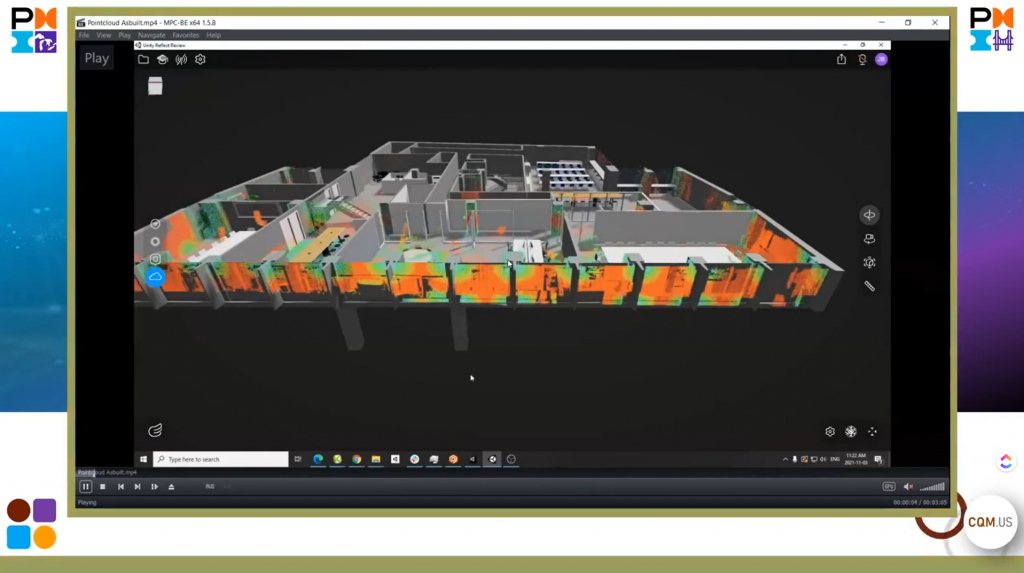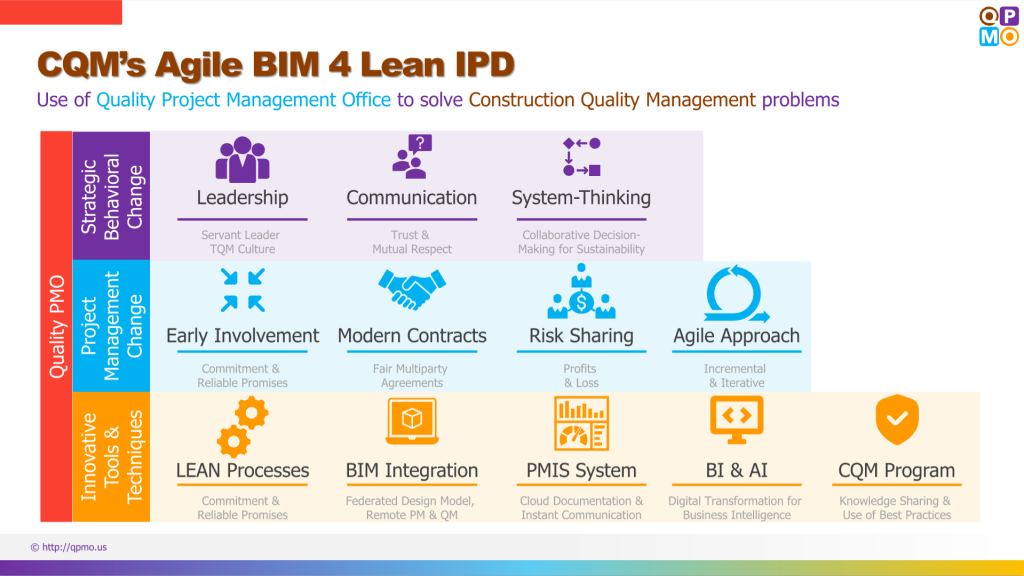Construction Management Using BIM and Metaverse for Facilities
Facilities.Solutions promotes Innovative Solutions and Advanced Technologies that help the effectiveness and efficiency of Business Operations and Project Management

Digital twins are enhancing the way capital projects and infrastructure are planned, built, and operated. Construction Management Building Information Modeling and Metaverse for Facilities Solutions have many obvious benefits such as optimized business operation decision-making and better project management outcomes. As changemakers for Digital Transformation for Construction 4.0, Facilities.Solution experts seek QualityPMO methodology to implement their CMBIM journey with input from their Professional Managers.
By encouraging a change in how the architecture, engineering, and construction (AEC) industry sector operates, Digital Twins can revolutionize the way capital projects are built and help achieve operational excellence. Capital project stakeholders, such as Owner representatives like Business Managers (CMBA) or Project Management (CPMP), need to be more aware of the wide-ranging benefits of digital twins and the challenges they must overcome to make the most of this innovative solution and advance technology.
CMBIM Digital Transformation for Digital Twins
A digital twin combines many innovative technologies in a federated model. Databases could be linked to make information into knowledge for decision-making using inputs from various users, sensors, and Industrial Internet of Things (IIoT) data collection tools. Metaverse platforms and Digital Twins software apply advanced analytics and machine learning behind the scene to offer valuable real-time insights into a physical asset’s progress, performance and operation to Business Administrators and Professional Managers.
Capital Improvement Directors, Lifecycle Project Managers, and Architects can determine Asset Performance for optimization before concepts are designed using simulations over their existing digital twin models. Upon a successful design alternative selection, engineers and architects could use it as their base to design more efficiently. On a Capital Improvement and Infrastructure project, the simulation outputs help sustainability and performance of building design with consideration for energy and electricity consumption, environment and air quality, people’s comfort and safety, and much more. The advantage is that this is a model that could be easily shared with other experts to add their details and designs without redesigning and redrafting the same information. Which means better quality, fewer man-hours, and more productivity!
During Construction and Operation & Maintenance phases, digital twins are used for tracking progress and resource management by comparing the as-built scenario model against the as-designed model in real-time. This ensures quality assurance and allows corrective actions to be made quickly, saving the project time and money which means more efficiency!
Facilities.Solutions shines when capital improvement departments utilize metaverse and digital twin to collect operational data to predict failures, simulate updates, prescribe corrective procedures, and forecast maintenance needs. The supply chain procurement management improves throughout the asset lifecycle by dynamically integrating data and building information throughout the asset lifecycle to achieve short and long-term efficiency and productivity gains.
Quality Culture Mindset and CMBIM Challenges
As mentioned there are many benefits to Metaverse and Digital Twins for Facilities.Solutions, so what challenges are prohibiting the AEC industry to utilize this innovative technology?
Facility Management and Construction Industry are the least digitized sectors because it is the oldest industry known to mankind! Business decision-makers are from older generations that are slow in adopting new trends and technologies. Construction Management was introduced as an academic and educational program in universities after the year 2000 and Facility Management hasn’t been received as a topic worth scientific research as of this date.
The industry is no better than the academic side: outdated contracts and procurement play a major part in the challenges faced by BIM development parties. Unless made into contract requirements by the Facility Owners and Business Case Managers, Project Managers and Contractors will only perform the minimum effort required to meet contractual terms.
The QualityPMO Methodology considers these deficiencies and encourages Professional Managers to apply EMARI System Thinking approach to provide incentives for risk sharing and innovation. The QPMO attempts to gather key stakeholders of this fragmented and uncoordinated industry into one office that values a psychologically safe environment for early engagement and creative collaboration. It is based on improving relationships among all team members and empowering all managers with mindfulness techniques and emotional intelligence to become Professional Managers of a well-performing team. Stakeholders focus on a holistic system-thinking approach to successfully complete projects leading to shared lessons and knowledge transfer in centers of excellence. This means better insights that are used for guided continuous improvement and deploying better solutions that are optimized for each facility as their own way of work and Facilities.Solution!

Within a QPMO, the CMBA and CPMP team work with the CQM team to develop requirements and quality standards needed to be shared data for CMBIM to perform with better effectiveness and efficiency. QualityPMO provides an environment for stakeholders to share their data and avoid silos that prevent the bidirectional flow of information required to develop a digital twin.
Facilities.Solutions applies the EMARI System Thinking approach for Quality Integration in Business Development using the QualityPMO Methodology for Digital Transformation to Metaverse and Digital Twins using the CMBIM recommended tools and techniques.
CMBIM for Smart Cities and Metaverse
Facilities and Capital Assets Owners, Business Operators, and Project Managers are the champions leading the use of digital twins as part of their Facilities solutions utilizing services such as the BIM Exchange. Professional Managers in a QPMO invoke the necessary changes for digital transformation to adopt digital twins which will become units of a metaverse known as Smart Cities for buildings and infrastructures of the future!
Digital twins are fast becoming essential technology and are being successfully deployed on large-scale capital projects which will help City Planners as well as facility owners and managers. Effectively deployed data and subsequent simulation models provide city stakeholders with the tools to optimize decision-making and enhance outcomes. Digitally creating urban locations works as simulation models to test and analyze how the city operates. There are over 10 successful smart cities such as Copenhagen, Seol, Beijing, Amsterdam, Singapore, and Dubai. For example, Singapore has invested $70 million in its Virtual Singapore metaverse, a digital replica of the city to be used as a testbed by government agencies, businesses, and researchers to build a more resilient city. Metaverse created by smart cities could utilize innovative technologies such as the Internet of Things (IoT), artificial intelligence (AI), and augmented and virtual reality (AR/VR), as a federated model and virtual replica of the city.
The Construction Quality Management Community of Practice, CQM.US, presented a discussion in September 2022 with a panel of experts from Unity Technologies to discuss the status of Digital Twins in the Construction Industry. The event is available on YouTube for free at http://cqm.us/digitaltwins
